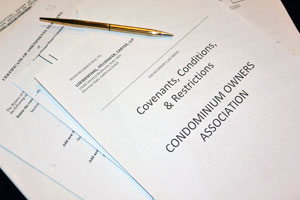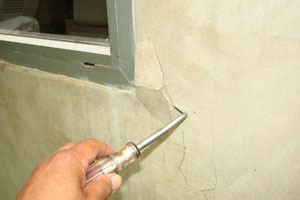LHC Newsletter Vol. 3, No. 6
“Drought and Water Related Regulations, Resources and Legislation – Associations managers and homeowners will continue to be affected.”
(Note: This is a summary of a longer article available at the firm website in Drought and Water Related Regulations)
Water restrictions are not new in California. However, for the first time in 18 years, Southern Californians are facing mandatory water conservation restrictions. This results from many causes including both a surge in the state’s population (9 million since the early 1990s) and a reduction in Southern California’s water supplies from Northern California and the Colorado River.
Use Restrictions
Local water districts such as Los Angeles’ Department of Water and Power, the Santa Fe Irrigation District (SFID), and the Carlsbad Municipal Water District, have enacted Level 2 Drought Alerts. Under Level 2 Conditions, mandatory water conservation measures include:
- No washing down of paved surfaces, except when it is necessary to alleviate safety or sanitation hazards.
- Use positive shut-off nozzles on hoses or use buckets when hand-watering plants.
- Limit lawn watering and landscape irrigation, using sprinklers, to no more than ten (10) minutes per watering station per assigned day from 6 p.m. to 8 a.m. Irrigation systems using weather-based controllers, drip/micro-irrigation and stream rotor systems are exempt from the 10-minute-per- station restriction.
- Limit residential and commercial landscape irrigation during the months of June through October to no more than three days a week. Addresses ending with even numbers are allowed to irrigate Saturday, Monday and Wednesday. Addresses ending with odd numbers are allowed to irrigate Sunday, Tuesday, and Thursday. Apartments, condominiums, and business are allowed to irrigate Monday, Wednesday and Friday.
- Limit residential and commercial landscape irrigation during the months of November through May to once a week. Apartments, condominiums, and businesses are allowed to water on Wednesday.
- Hand-watering using positive shut-off nozzles on hoses or using buckets only on the irrigation schedule established for automatic irrigation systems..
- Stop water waste resulting from inefficient landscape irrigation, such as runoff, low head drainage, or overspray.
- Repair all leaks within 72 hours of notification
- Stop operating ornamental fountains or similar decorative water features unless recycled water is used.
The penalties for violation of mandatory water conservation measures range from notification by letter for a first violation to an administrative fine of $500 for a fourth violation in a one-year period. Moreover, if your association’s CC&Rs has provisions related to the maintenance of landscaping that conflict with the mandatory Level 2 Conditions, don’t worry. State law provides that CC&Rs cannot be enforced if they are unreasonable or contrary to statute. (See, 14859 Moorpark Homeowner’s Assn. v. VRT Corp. (1998) 63 Cal.App.4th 1396, 1406-1407; Thaler v. Household Finance Corp. (2000) 80 Cal.App.4th 1093, 1102 [it is well-settled that in the event of a conflict between CC&Rs and the Davis-Stirling Act, the Act prevails as a matter of law].)
Impact of Water Restrictions
What will be the impact of the newly enacted water restrictions on community interest developments? With most associations already spending approximately 15% of their annual budgets on water and sewer related costs, Level 2 Drought Conditions will mean greater use restrictions and greater costs for excessive water use unless water usage is cut by 20%. Some ways to help reduce water consumption include:
For Common Area Landscaping:
- Set automated systems to water at 80% of the required level – this will cause a browning of grass but still deliver enough water to ensure survival
- Completely turning off irrigation during the rainy season.
- Experiment with gravel perimeters around sloped turf to reduce run-off.
- Purchase pool and spa covers to decrease evaporation when not in use. An average sized pool loses about 1,000 gallons per day – a pool cover can cut such losses by 90%.
- For Individual Usage
- Check for indoor water leaks and get them fixed immediately
- Use your dishwasher instead of hand washing dishes and only run the dishwasher when its full (up to 4 gallons per load)
- Turn off water when brushing your teeth (2 gallons per minute)
- Take shorter showers or install low flow showerheads. Typically, a four-minute shower uses approximately 20 to 40 gallons of water.
- Don’t use the toilet as a trash can (1.6 gallons per flush)
- Use your clothes washer for only full loads. (up to 50 gallons per load)
- Fix leaky toilets (up to 50 gallons per toilet per day)
- Fix leaky faucets (up to 20 gallons per faucet per day).
- Replace toilets with ultra low flush models or retrofit with low flow flappers; retrofit faucets with aerators or consider alternative faucet types such as self-closing or automatic sensor controlled faucets.
- Sweep patios with a broom rather than washing off with water
- Minimize your use of your garbage disposal
- When washing dishes by hand, don’t leave the water running for rinsing. If your have a double- basin, fill one with soapy water and one with rinse water. If you have a single-basin sink, gather washed dishes in a dish rack and rinse them with a spray device or a pan of hot water.
- Purchase an instant water heater for your kitchen sink or a water recirculation system for your whole condo. Both of these items dramatically reduce the wait time for hot water and cut water consumption.
- Consider replacing your appliances with more water efficient models. Efficient washing machines can save up to 20 gallons per load and energy costs. Rebates are being made available by manufacturers and water districts and include up to $185 for a energy efficient washing machine and up to $200 for a high efficiency toilet.
- Sub-metering. As stated above, many older multi-family communities have one master water meter for all residents and all water and sewer costs are divided equally among the residents and included in the monthly homeowners dues. Sub-metering offers equitable distribution of cost and peace of mind to residents allowing them to pay for only the water they use.
Coming Legislation
With a large percentage of the State suffering from drought, water is clearly one of the hot-button topics now circulating in Sacramento. Everything from usage limits and rates to home plumbing to water meters is being discussed by our Legislators. Here are several items of particular interest to community interest developments that are currently in Committee.
SB1328: This bill would authorize homeowners association Boards of Directors to enter into multi-year water and energy contracts.
AB49: This bill would state the intent of the Legislature to enact legislation to establish a 20% water efficiency requirement for the year 2020 for agricultural and urban water users.
AB300: This bill would regulate water supplies to subdivisions of 50 or more units. The bill is long, convoluted and controversial.
AB1061: This bill would render void and unenforceable any provision in the governing documents of a homeowners association that has the effect of prohibiting low water-using plants or prohibits or restricts compliance with local conservation ordinances. It also would allow homeowners associations to enforce landscaping rules and regulations.
Links to Resources Related to Water Restrictions
DWP Shortage Year Rates Fact Sheet:
http://www.ladwp.com/ladwp/cms/ladwp011946.pdf
DWP Sprinkler Use Ordinance:
http://www.ladwp.com/ladwp/cms/ladwp011971.pdf
DWP Prohibited Water Uses:
http://www.ladwp.com/ladwp/cms/ladwp009868.pdf
Ventura County Resource Conservation District:
http://www.vcrcd.org/ Prog rams.cfm
Santa Barbara County Public Works Dept. – Water Resources Division:
http://www.countyofsb.org/pwd/pwwater.aspx?id=3574
Santa Barbara County Water Providers – Conservation Information:
http://www.sbwater.org/
San Luis Obispo County Water Resources Information:
http://www.slocounty.ca.gov/PW/WaterResources.htm
Municipal Water District of Orange County’s Landscape Performance Certification Program: Provides homeowners associations with FREE water management tools:
http://www.waterprograms.com/wb/32_HOA/HOA_01.htm
©2009 by Loewenthal, Hillshafer & Carter, LLP. All rights reserved. Permission is granted to reproduce or transmit in any form any part of this newsletter as long as proper attribution to Loewenthal, Hillshafer & Carter, LLP is given. Due to the rapidly changing nature of the law, information contained in this publication may become outdated. As a result, lawyers and all others using this material must research original sources of authority.


